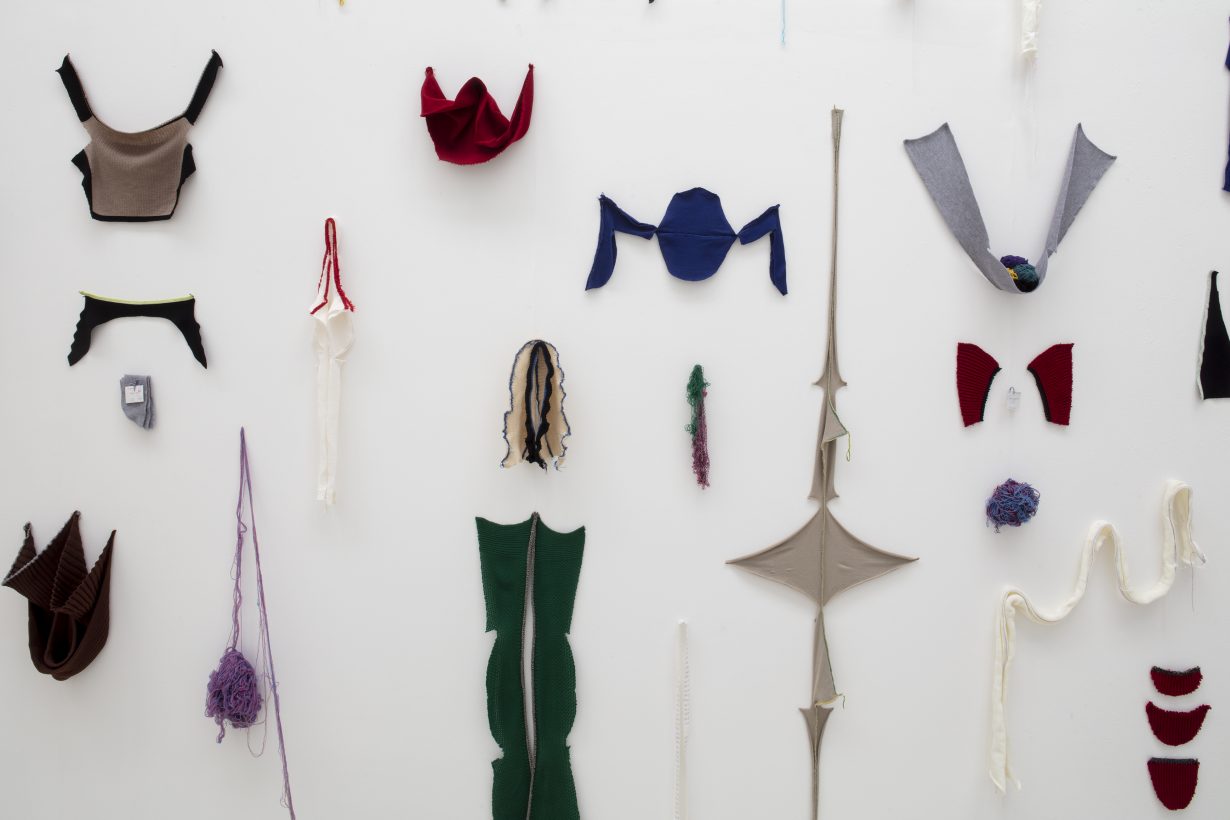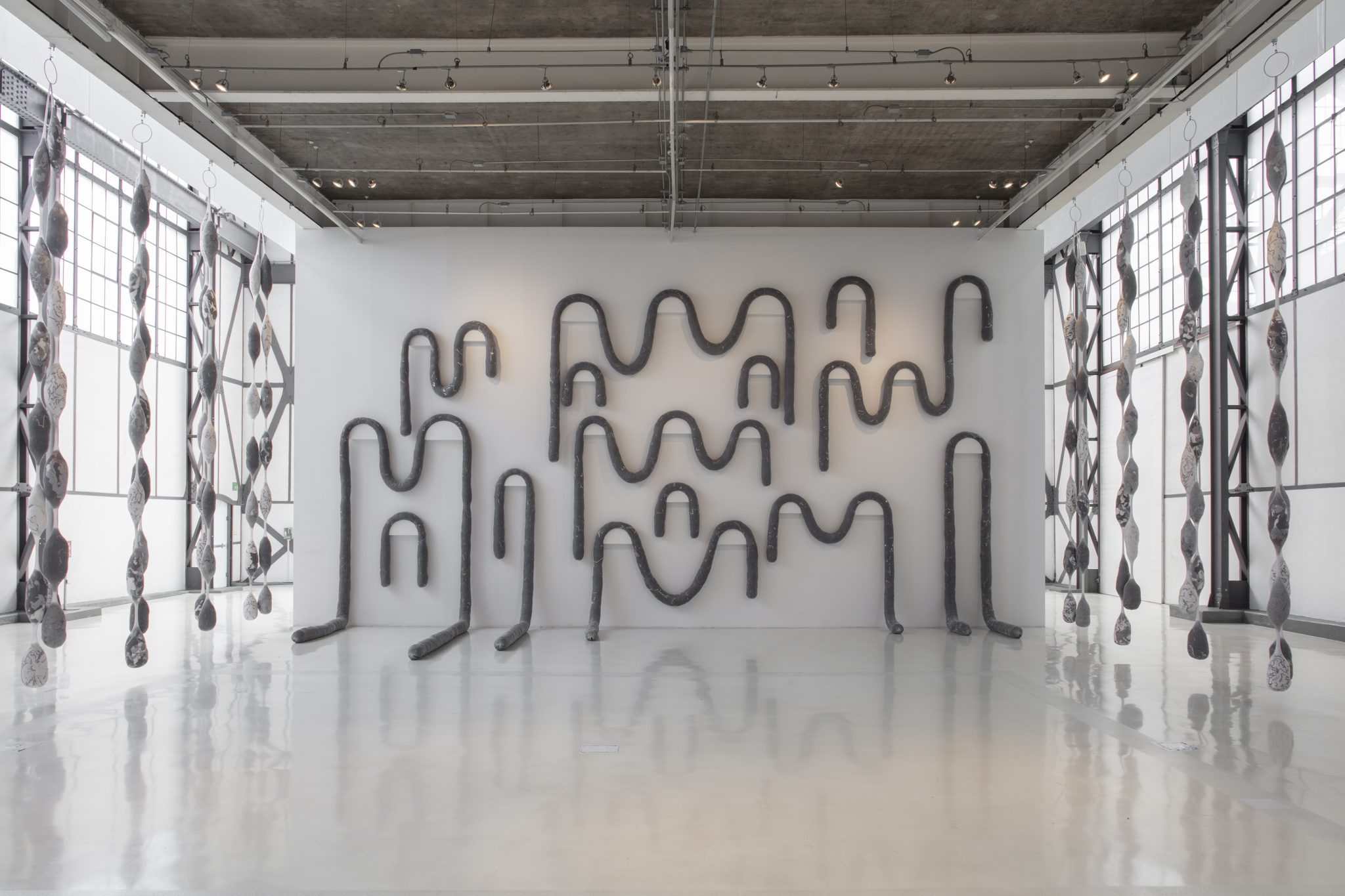Exuvia at Museo Universitario del Chopo, Mexico City attempts to marry a soft and powerful formalism with a weightier didacticism
Maximiliano Rosiles grew up during the 1990s and 2000s, moving back and forth between the Rio Grande Valley area in Texas and the Mexican state of Guanajuato. Returning to the Guanajuato town of Uriangato more recently and discovering that it had been overrun by drug cartels, he moved once again, to Mexico City, where he lives today.
Exuvia, his first major solo show in an institution, is visually seductive. In El Chopo’s tall, light-filled atrium he has hung a series of tubular sculptures in almost symmetrical patterns. Though the pieces are soft and squiggly, made of white nylon netting filled with discarded textile materials to the point of bulging, they are arranged in the space in a clean, deliberate manner. They’re sensual and intriguing, rubbing lightly against each other on air currents as they hang from the ceiling. Against the back wall are more-uniformly-sausagelike grey sculptures, resting on semicircular shelves and spilling down to the floor in wavy formations. Behind that wall hangs a surprisingly colourful arrangement of more discarded materials, mostly hand-knitted, in a pattern that looks conspicuously fashion-like, as though taken from old display walls at American Apparel.

The work looks fabulous, and as formal exercises I thought it impressive, yet I was taken aback to learn that it was meant to represent the tired, lurching bodies of migrants, or so it says in a text written by the artist and suggested by Chicano poet Gloria Anzaldúa’s ‘Reincarnation’ (1974), printed in English on one of the walls. The poem, an allegory of skin-shedding and rebirth, resonates in the exhibition’s title, a word referring to moulted skin or the castoff remains of a creature’s exoskeleton. It is disorienting to go from thoroughly enjoying wonderful shapes and an elegant installation to realising that these are meant to be abstracted forms of the heavy burdens that people forced to migrate must carry with them. Yet as much as didactic political work can get annoyingly prescriptive, I become suspicious of Rosiles’s drastically aestheticising gesture of such a history of violence, his ‘snake husks’ managing to be both literal and decorative. The work is soft and powerful, yet the discursive side of it is, well, prescriptive, didactic, mismatched. Hard to tell if it is the demands of the art market that beautiful work must also espouse ill-fitting discourse, or if it is simply a young artist’s understanding of what’s expected of them.
Exuvia at Museo Universitario del Chopo, Mexico City, through 5 March
